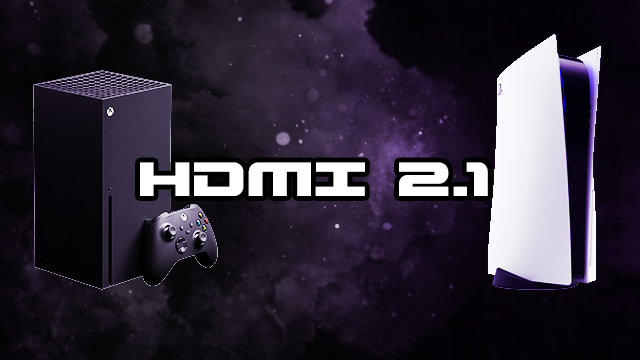HDMI 2.1 has almost triple the bandwidth of HDMI 2.0, jumping from 18 Gbit/s to 48 G/bits. There are many excellent features available with HDMI 2.1 because of this increased data transmission rate. As such, the PS5 and Xbox Series X, both of which support HDMI 2.1, have some additional functions added that weren’t on their predecessors.
Unfortunately, if you bought a TV or A/V receiver before 2019, it almost assuredly isn’t compatible with HDMI 2.1. That means you’ll miss out on some of the new features found in the PS5 and Xbox Series X if you stick with your old setup. Here’s a list of the functions you’ll miss out on with the PS5 and Xbox Series X if you play on an HDMI 2.0 TV.
Variable Refresh Rate (kinda)
Variable Refresh Rate (VRR) reduces or eliminates lag, stutter, and frame-tearing in games. You’ve likely noticed, especially on the base PS4 (or PS4 Slim) and base Xbox One (or Xbox One S), that framerates can jump up and down frequently. Especially with recent titles, like The Last of Us 2 and Control, microstutter and lag can be jarring. However, VRR helps to smooth that out, and functions like G-Sync and Freesync on PCs.
VRR is primarily an HDMI 2.1 feature, but some TV manufacturers have enabled the function via firmware for HDMI 2.0b sets. However, it’s unknown whether these sets will enable VRR for the PS5 and Xbox Series X. The HDMI 2.0b implementation of VRR seems like it was a stopgap, so it wouldn’t be surprising if the new consoles didn’t work correctly with VRR on those models. Additionally, FreeSync and G-Sync aren’t available via HDMI 2.0b, but PCs can take advantage of VRR if those functions are unavailable.
Check out the best HDMI 2.1-capable A/V receivers
Extended Audio Return Channel (eARC)
This is another feature that some TV and AVR makers have implemented with HDMI 2.0b. However, to get the full benefits of eARC, you need HDMI 2.1 devices. With eARC, you can finally pass DTS:X, Dolby Atmos, and full PCM multi-channel audio through your TV to your A/V receiver. This makes the process of hooking up your equipment much more straightforward and should allow PC users to stop using awkward workarounds to get surround sound.
Auto Low Latency Mode
Auto Low Latency Mode isn’t a huge deal, but it’s a great convenience. Instead of having to switch between your cinema/TV and game/PC settings on an input, your TV will detect when a game console or PC is in use and automatically switch to the correct mode. It also deactivates all post-processing, which means there’ll be less time between pressing a button on your controller and seeing the action appear on screen. This is great if you have most of your devices running through your A/V receiver, and eliminates a minor annoyance when switching between gaming and watching TV or movies.
See the best HDMI 2.1 TVs for gaming
Higher resolutions and framerates
HDMI 2.0 is limited to 4K at 60 fps with HDR at 4:4:4 chroma. However, any higher than that and you lose chroma and eventually run out of bandwidth. With video cards getting better and better each generation, it’s going to quickly become possible to run 4K content at up to 120 fps, and the PS5 and Xbox Series X are designed with that in mind. HDMI 2.1 can run 4K up to 144 fps with full chroma and push 8K 60 fps with Display Stream Compression.
Given that 8K is the highest resolution consumers will likely have to deal with through the next decade, buying into HDMI 2.1 helps with future-proofing. Hardly any 8K content exists, but those with HDMI 2.1 TVs and receivers will be ready for it when it hits the mainstream.







